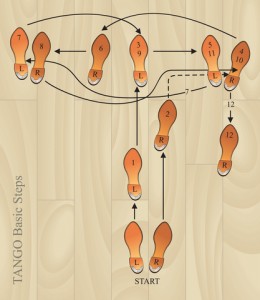Warning! This blog may not be suitable for all readers, especially for those who made resolutions against happiness and prosperity in 2013, and for those who do not believe in the Constitution of the United States of America.

Enlightened Leaders can make others happy. Understand, this is not meant to say leaders are responsible and accountable for other people’s happiness, but Enlightened Leaders with high Emotional Intelligence (EQ) are responsible and accountable for creating environments where people can experience happiness. Consider this: The compassionate pursuit of happiness is not about what you want to be, it’s about who you want to be in this world:
- as a compassionate human being
- a compassionate organization
- a compassionate business entity
Time is passing not everlasting. Notice? You blinked a few times and February 2013 is upon you, and will soon be gone. The Golden Globe Awards are behind us and now the Academy Awards are a couple weeks away. Time is passing not everlasting.
Have you had a chance to see the impressive small film, Happy? I highly recommend how this film explores the intrinsic contributors to our happiness as compassionate human beings. According to filmmaker, Michael Pritchard, “Compassion leads to happiness. Search the world for secrets to life’s greatest emotion, happiness.”
Economic growth has doubled in the last 50 years, but we’re not any happier, even though we have much more materialistic stuff. Right? Is everything we were taught about happiness and prosperity wrong-headed? After all, the study of happiness is nothing new. The point is that we haven’t seemed to learn very much from all the happiness research, and Corporate America (and society in general) hasn’t exactly embraced happiness or its relationship to compassionate leadership.
After all, most of us began the new year making promises to improve our lives, resolutions and un-resolutions based on what we did and didn’t do the year before. So, without looking too far ahead, look back at 2012 and assess what happened, what got you there, and most importantly, what made you happy, and why?
I believe that if you can tap into what makes someone else happy, you’ve expanded your enlightened leadership competencies. Plus, the fulfillment of making others happy reinforces your own happiness. For we cannot have relationships with others without reciprocity, mutual acceptance, respect, and value. Mutual benefit must exist to sustain relationships. Without mutual benefit, relationships die.
There are many things we do not fully understand on this planet, not on this plane. Yet, we must try to understand. Trying to understand is simply an exercise in becoming a better human being, a better leader.
Dr. Richard Davidson, University of Wisconsin, “Quantify happiness and you can quantify anything.” We’ve spent forever studying depression. Isn’t it high time we take a closer look at the value of happiness in leadership. The goal of psychology has been to help people rid themselves of their problems. Positive psychology studies and guides people towards happiness. Did you know that “Happiness” has become the most popular elective course at Harvard?
Marci Shimoff, author of Happy for No Reason says, “Our values are a key component of happiness.” Shouldn’t our values shape the kind of leader we are capable of becoming? Happiness is which something so often easily discarded as a “soft skill” is actually hard to develop, unless the essence of Enlightened Leadership is within you, and your organizational culture supports it.
Forbes released the January 15, 2013 report on the “World’s Happiest Countries.” Guess what? The USA wasn’t among the Top Ten again this year! What’s wrong with us?
Researchers have long known that we have pre-disposed genetic set points that play a role in determining how happy we can be. Moments of great joy or great sorrow return us to our happiness set points. Here’s the thing ~ While 50% of our happiness is genetically pre-programmed, only 10% is based on circumstances, 40% is based on intentional behavior! In other words, it’s what you choose to do, who you choose to be that has a significant impact on your lasting happiness, and in turn, the happiness of others around you.
Decades of research proves that happiness increases nearly every business and educational result: increasing sales by 37%, productivity by 31%, and accuracy on tasks by 19% as well as a myriad of health and quality of life improvements. Among those companies that don’t take leadership development seriously, vital and emerging leaders, these same companies ignore the role happiness plays in leadership effectiveness.
What can your company do to raise the happiness level of an employee? Happy human beings function better, are more productive, and live longer. Is the dissatisfaction in your company caused by depression stressors, or combined with low levels of Emotional Intelligence (EQ) within your leadership team, or the absence of happiness within the organizational culture?
Think about it. What did you do when the umbilical cord was cut? Cry, Baby Cry.
Knowing happiness can be quantified and measured, why has Corporate America been so slow to capitalize on its value to business? What about your company? (Conference room donuts, bagels, muffins, cookies, brownies, hot cocoa, and coffee don’t count!)

Nearly every company gives lip service to the philosophy “people are our greatest asset.” Results from the Conference Board’s most recent survey (tracking job satisfaction) shows that employees are “the unhappiest” in the 24 year history of the survey! Around the same time, CNNMoney reported that 87% of Americans are unhappy with their job. Mercer’s “What’s Working” survey found that one in three US employees are serious about leaving their current jobs. The numbers are higher among younger employees under 30 who tend to trend toward far more restless movement.
In her new book, The Myths of Happiness Sonja Lyubomirsky, psychology professor, argues that holding on to fallacious ideas about happiness, thinking we’d be happier if we had the right relationship, social status, material possessions, or…[fill in the blank] works against us. The issue is that these kind of thoughts keep us mired in our past, and don’t reflect how one cultivates happiness in real life.
Appreciating our relationships compels us to extract the maximum possible satisfaction and helps us to be grateful for it, relish it, savor it, and not take it for granted. Cultivating appreciation also helps us feel better about ourselves, more connected to others, more motivated to nurture relationships, and less likely to compare our situation to others and become envious. When given the choice between competition and collaboration, compassionate human beings will choose collaboration.
We all know someone who has stellar success in their professional life but completely miserable in their personal life, every relationship an apparition. What’s your story?
Based on the metrics alone, you can easily make the case that the single greatest competitive advantage, in the modern economy, is a happy and engaged workforce.
In the New Age of Enlightenment, Enlightened Leaders must lead the way out of the darkness of depression and recession into the light of happiness. We, through intention, can change our brains, and in turn, the world around us. Enlightened Leaders perceive happiness as a skill. Compassion is in our DNA, caring about people, places, and things outside of ourselves.
People joke about “natural highs.” Truth is, science has proven that the compassionate pursuit of happiness gives you “natural highs” as good or better than any drug.
Acknowledge that happiness is an advantage at work that can be leveraged to get things done. Seek happiness in the present instead of waiting for future success. Exercise your brain for higher levels of happiness by creating habits shown to increase job satisfaction:
- Write a brief e-mail every morning thanking or praising a team member.
- Write down three things you are grateful for each day.
- Spend a couple minutes recalling something positive you’ve experienced over the last 24 hours.
- Exercise every day.
- Practice “Mindful Meditation” for a few minutes. Focus on your breathing in/out.
- Be forgiving. Practice forgiveness ~ every day of your life.
Of course, if you can’t see the value, none of this will matter to you, and you should have read the disclaimer. Happiness comes from the capacity to feel deeply, to enjoy simply, to think and act freely, to risk life, to be needed not ignored.
Happiness: Set your compassionate self free, and the world is yours.
Marc Ortiz de Candia, Executive Partner, Vitalia Consulting
Music Playlist to Get Your Happiness Groove On:
- Can’t Buy Me Love ~ The Beatles (Hard Day’s Night movie soundtrack)
- Respect Yourself ~ The Staple Singers
- Sweet Dreams ~ The Eurythmics
- Higher Ground ~ Stevie Wonder
- Sweet Dreams ~ Senor Coconut
- Happiness Runs ~ Donovan (Yes! That Donovan!)
- Ode to Joy ~ Beethoven (from Symphony No. 9 in D Minor)
- Tomorrow Never Knows ~ The Beatles (Revolver)
- Oh Happy Day ~ The Edwin Hawkins Singers
- Bossa Per Due ~ Antonio Carlos Jobim
- 100% Pure Love ~ Crystal Waters
- Happy Talk ~ South Pacific (South Pacific movie soundtrack)
- If Six Was Nine ~ Jimi Hendrix
- Stand By Me ~ John Lennon (version)
- Four Seasons ~ Vivaldi
- Because ~ The Beatles (Abbey Road)
- Instant Karma ~ John Lennon
- Imagine ~ John Lennon
- Happiness ~ Johnathan Jeremiah
- Here Comes The Sun ~ The Beatles (Abbey Road)
- I Can See Clearly Now ~ Johnny Nash
- Inner Light ~ The Beatles (b-side of Lady Madonna)
- A Beautiful Morning ~ The Rascals
- Rain ~ The Beatles (b-side of Paperback Writer)
- Living in a Material World ~ George Harrison
- The Trip ~ Donovan (Yes! That Donovan again!)
- Across The Universe ~ The Beatles (Abbey Road)
- Love ~ Air
- Yellow Submarine ~ The Beatles
- Feelin’ Good ~ Joe Sample and Randy Crawford
- Groovin’ ~ The Rascals
- I’ll Take You There ~ The Staple Singers
- Happy Birthday ~ The Beatles (“aka” The White Album”)
- You Can’t Buy My Love ~ Robert Plant (Band of Joy)







